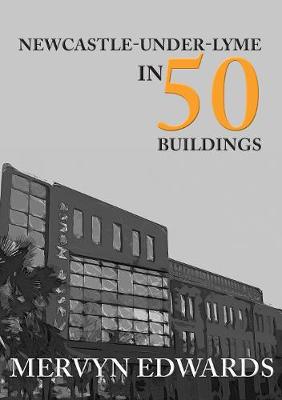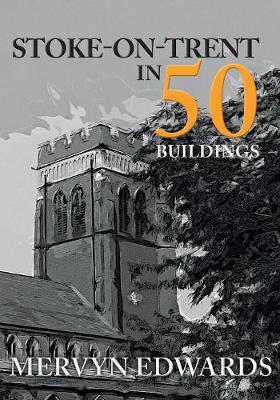In 50 Buildings
2 total works
The Staffordshire market town of Newcastle-under-Lyme developed around the twelfth-century castle and was granted a charter by Henry II in 1173. The town's growth between the twelfth and eighteenth centuries was driven by industries including the hat-making trade and silk and cotton mills. Later industries included brick manufacturing, engineering, iron casting and coal mining.
In this book, local author Mervyn Edwards highlights fifty of the town's buildings and structures that reveal its history, character and changing face across the centuries. No book on Newcastle-under-Lyme's architecture would be complete without a critical analysis of the borough's approach to building preservation and the gradual erosion of the town's visual appeal. The town still offers some architectural glories, such as the art deco Lancaster Buildings, the elegant Unitarian Meeting House and the majestic tower of St Paul's Church. Newcastle-under-Lyme in 50 Buildings highlights the treasured buildings of this Staffordshire borough.
In this book, local author Mervyn Edwards highlights fifty of the town's buildings and structures that reveal its history, character and changing face across the centuries. No book on Newcastle-under-Lyme's architecture would be complete without a critical analysis of the borough's approach to building preservation and the gradual erosion of the town's visual appeal. The town still offers some architectural glories, such as the art deco Lancaster Buildings, the elegant Unitarian Meeting House and the majestic tower of St Paul's Church. Newcastle-under-Lyme in 50 Buildings highlights the treasured buildings of this Staffordshire borough.
Undervalued, under-listed and under threat, the buildings of Stoke-on-Trent stand defiant, reminders of the area's glorious economic heyday and its unique, almost perverse, municipal growth. The city's building stock often holds a mirror up to its people: pragmatic rather than flamboyant, humble rather than flaunting. It was not without reason that architectural historian Nikolaus Pevsner described Stoke's towns as an 'urban tragedy', yet their buildings reflect the innate qualities of local inhabitants. Their creativity and nose-to-the-grindstone graft produced handsome yet functional buildings such as Tunstall Town Hall, Etruria Methodist Chapel and the Twyford's factory at Cliffe Vale. Yet, here and there, we find extravagance and even eccentricity in the way of polychromatic facades, ceramic fascias, baroque detail and eye-catching relief pub signs.
Stoke-on-Trent in 50 Buildings examines the city's notable architecture and offers original comment on how it compares with buildings and structures in other locations. Local historian and author Mervyn Edwards has spent nearly thirty years describing - and often drawing - the buildings of Stoke-on-Trent, and has seen many of them fall to the wrecking ball. This book offers his insights on some of those that stand today as cultural anchors in the city.
Stoke-on-Trent in 50 Buildings examines the city's notable architecture and offers original comment on how it compares with buildings and structures in other locations. Local historian and author Mervyn Edwards has spent nearly thirty years describing - and often drawing - the buildings of Stoke-on-Trent, and has seen many of them fall to the wrecking ball. This book offers his insights on some of those that stand today as cultural anchors in the city.

